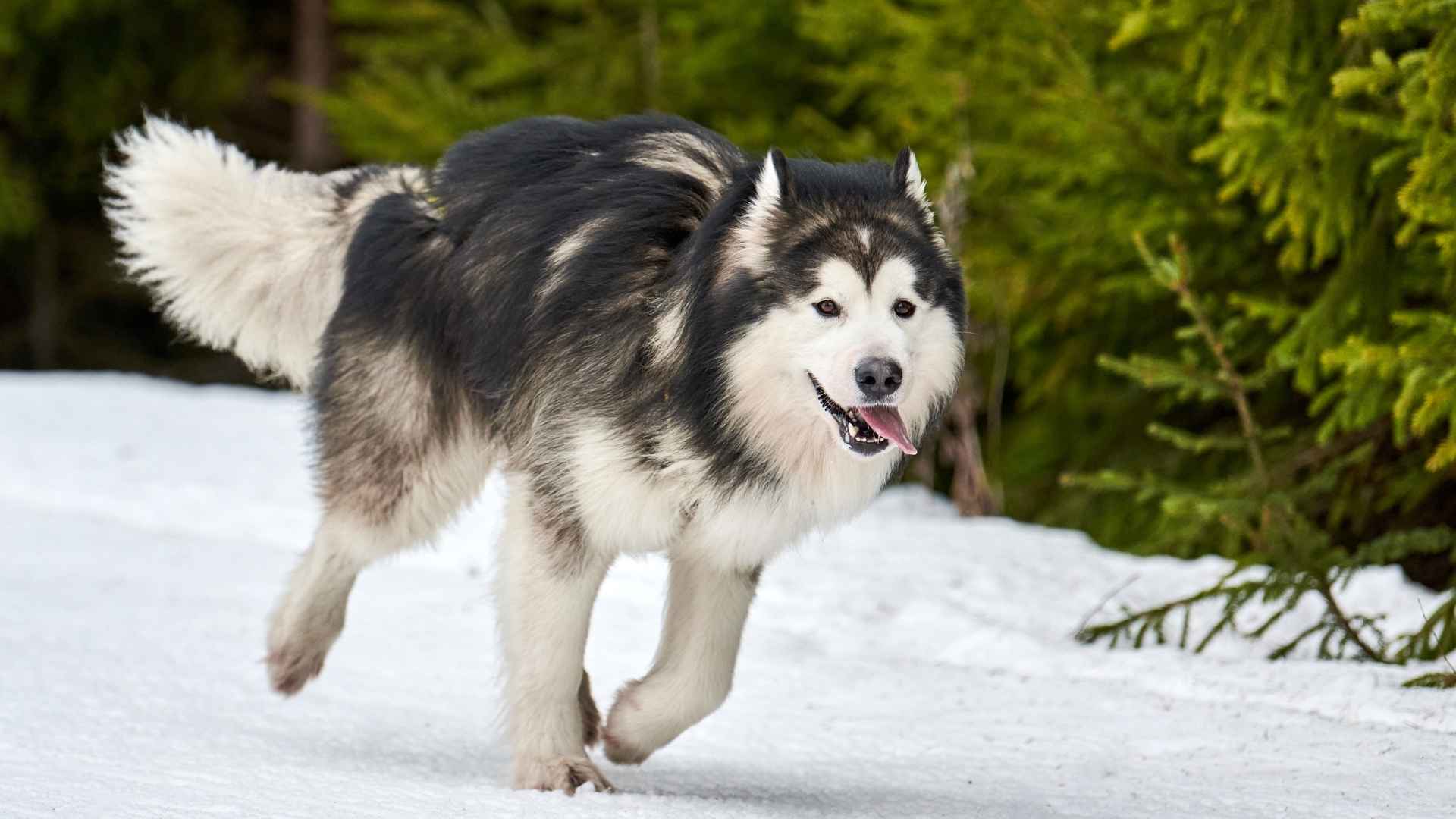Straight out of a magical winter wonderland, huskies captivate with their stunning, almost otherworldly beauty. These arctic gems are beloved worldwide for their sleek, powerful bodies, eye-catching fur patterns, and unforgettable sparkling eyes that seem to hold a story.
But it’s not just their looks — huskies carry that wild, adventurous spirit inherited from their wolf ancestors, making them truly one-of-a-kind companions. If you’re head over heels for the husky vibe but realize their high energy or specific needs don’t quite match your lifestyle, don’t worry! You don’t have to miss out on that iconic look.
There are plenty of other husky-like dogs out there that share similar features and charm, perfect for husky fans who want a similar aesthetic without all the husky-sized commitments. Ready to meet some husky doppelgängers? Let’s dive in!
Dog Breeds that Look Like Huskies
1. Utonagon Dog
If you’re swooning over huskies but need a dog that fits your lifestyle better, meet the Utonagan — the majestic wolf look-alike with a heart of gold! Named after the Chinook Indian phrase meaning “Spirit of the Wolf,” these pups were carefully bred in the 1980s by mixing Siberian huskies, Alaskan malamutes, and German Shepherds.
The result? A stunning dog that looks wild but is actually a gentle, loving companion.
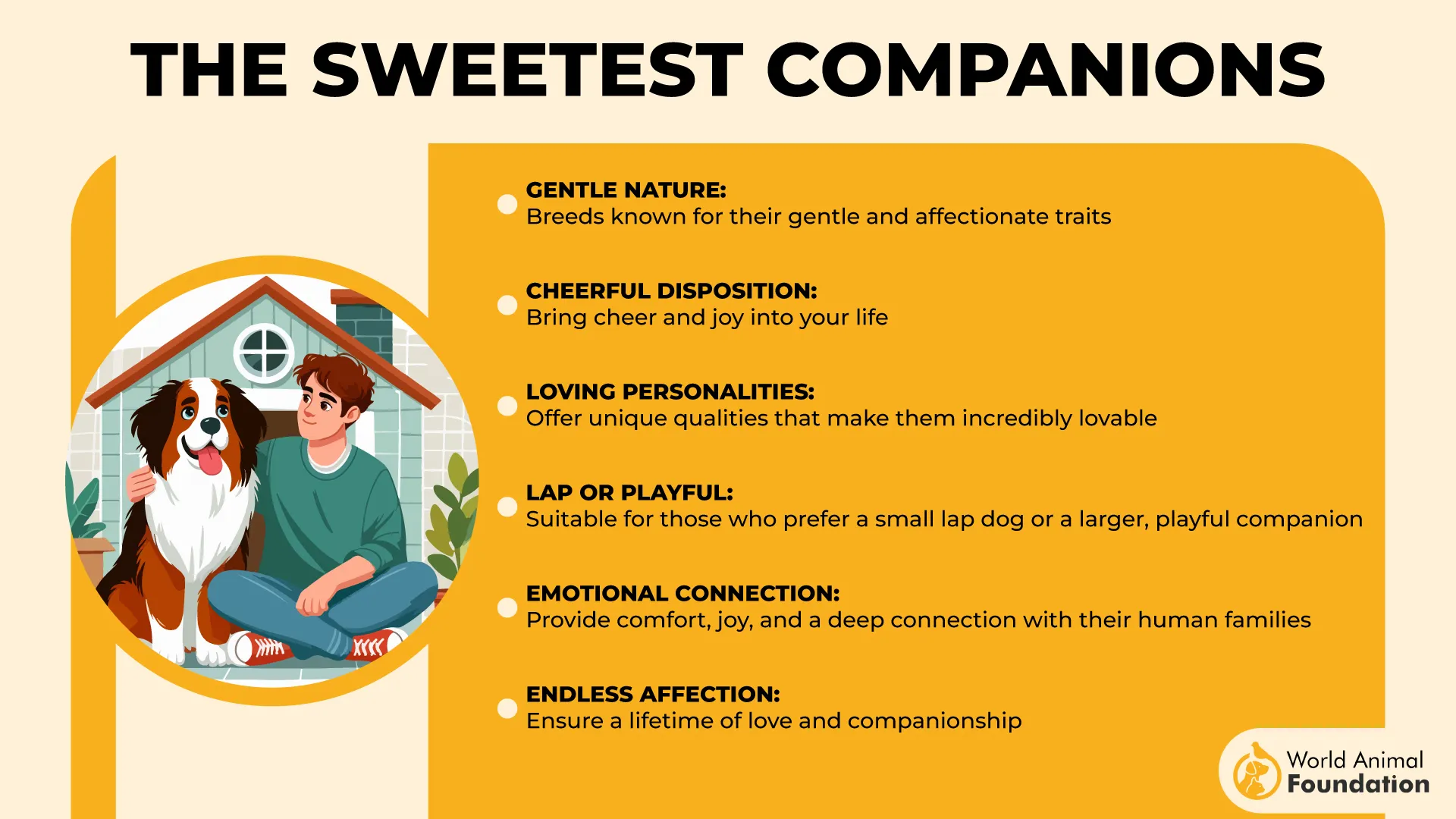
Utonagan puppies are irresistibly charming with plush coats and curious eyes. They grow quickly and adapt well to both city and country living, though their thick double coat makes them sensitive to heat.
Known for their intelligence and emotional intuition, Utonagans sense your moods and respond calmly instead of barking. Their eagerness to learn makes training simple, from tricks to agility.
Great family dogs, Utonagans are gentle, playful, and get along well with kids. Early socialization helps them bond deeply, especially when children involve them in learning new tricks.
Fun Fact:
Despite their wild wolf-like features, Utonagans have zero wolf DNA. Their fierce appearance is just the magic of some carefully mixed genes, proving you can totally have a “wolf” without the wild side. Cool, right?
2. Alaskan Klee Kai
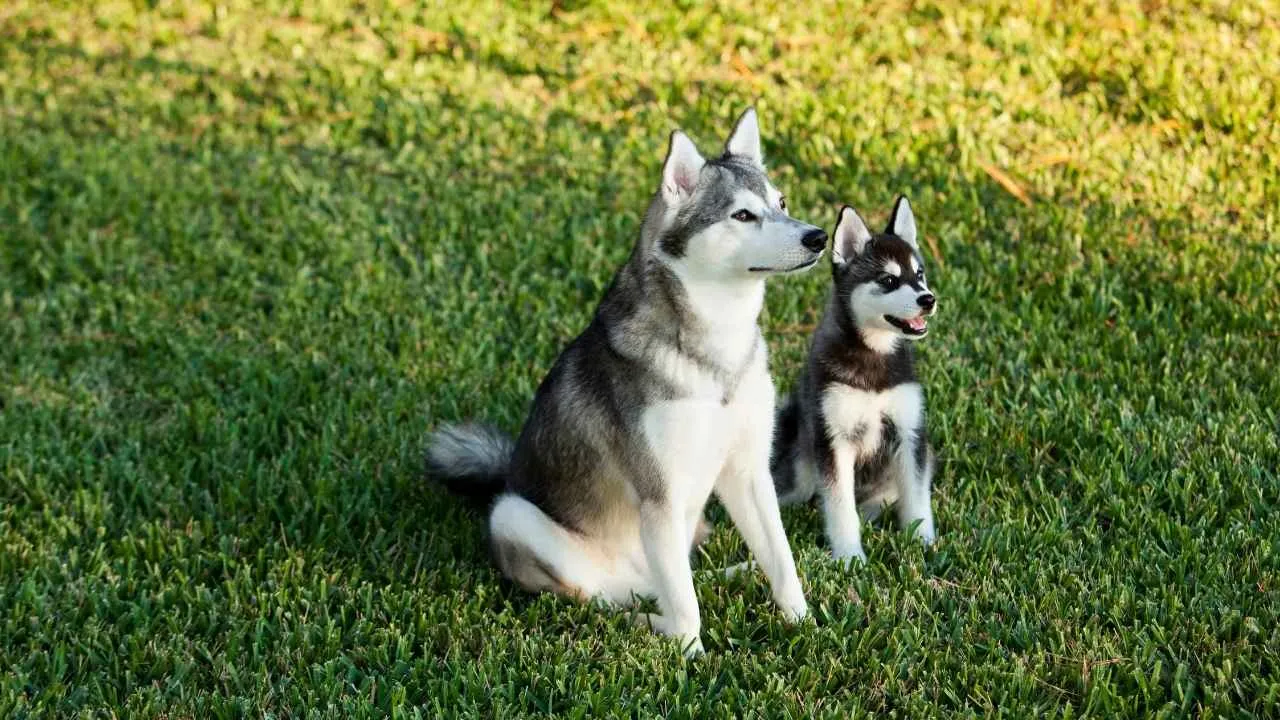
If you adore the fluffy coat and icy blue eyes of a Siberian Husky but need something smaller and more manageable, say hello to the Alaskan Klee Kai! These pint-sized pups are basically mini Huskies, sharing many traits with their sled dog cousins but in a much cuter, compact package.
The term “klee kai” means “small dog” in Alaska’s Athabaskan language! Alaskan Klee Kai come in three sizes: Standard (15–17 inches, 16–25 pounds), Miniature (13–15 inches, 10–18 pounds), and Toy (under 13 inches, 6–12 pounds).
PetMD states that this unique breed was created in the 1970s by Linda Spurlin, who fell in love with a tiny Husky named Curious and set out to develop a small-dog version of the Husky.
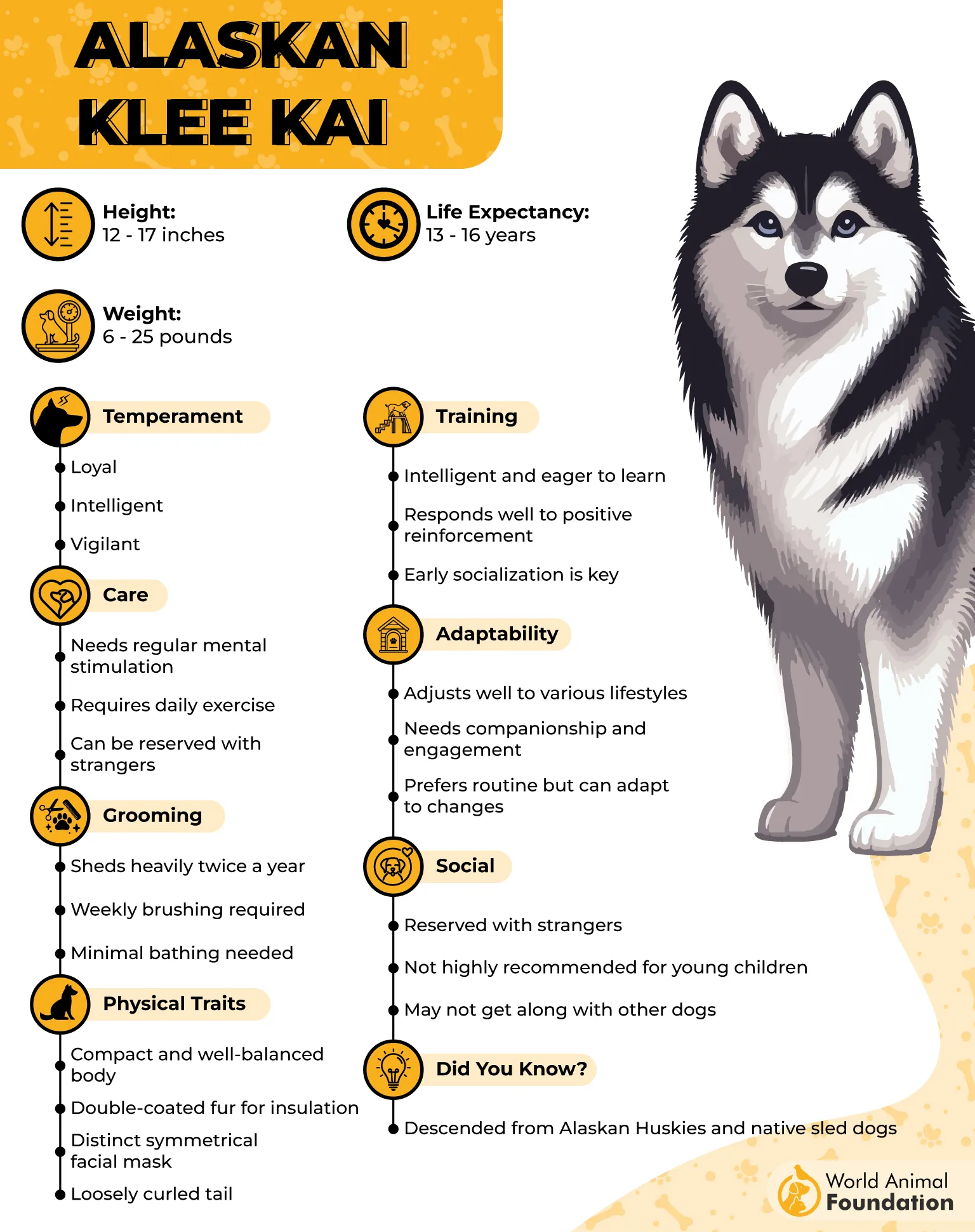
Though Huskies are working dogs, Alaskan Klee Kai are bred as affectionate companions. They’re playful and intelligent but can be shy with strangers. Like their larger relatives, they have high energy and need daily exercise and mental stimulation to prevent vocal complaints.
Grooming is easier than with Siberian Huskies—weekly brushing keeps their double coat tidy, and baths are only occasional. They’re loyal and love cuddling but may not tolerate rough handling from young children, so supervision is important.
Socialization is crucial, as they usually get along with other dogs but may chase smaller pets. At home, they enjoy long walks, playtime, and snuggling. Smart and eager to please, they respond best to gentle, positive training, making them great for patient owners.
3. Alaskan Malamute
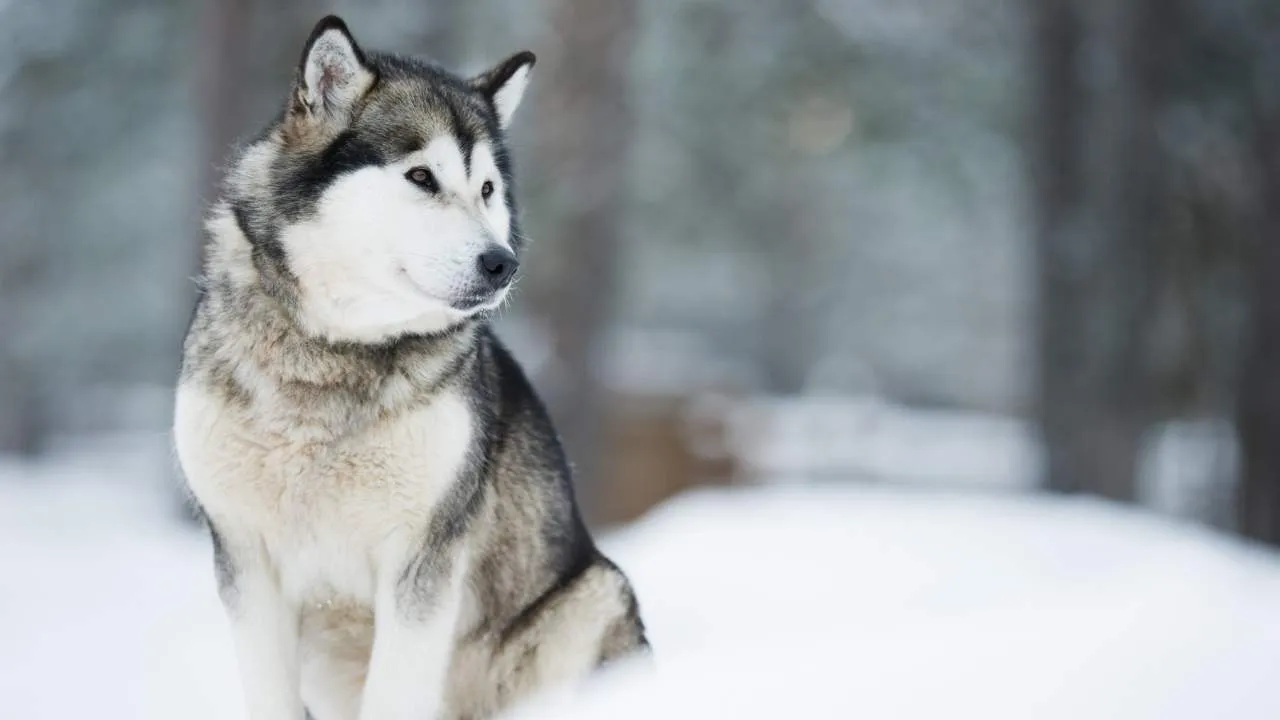
The Alaskan Malamute is a powerful sled dog named after Alaska’s Malemute people. This is also the official state dog of Alaska. With erect ears, a plume-like curled tail, and a thick double coat in gray-and-white or black-and-white, they have a classic “wolfy” look. Built for hauling heavy loads across snowy trails, they’ve even joined Antarctic expeditions, states Hillspet.
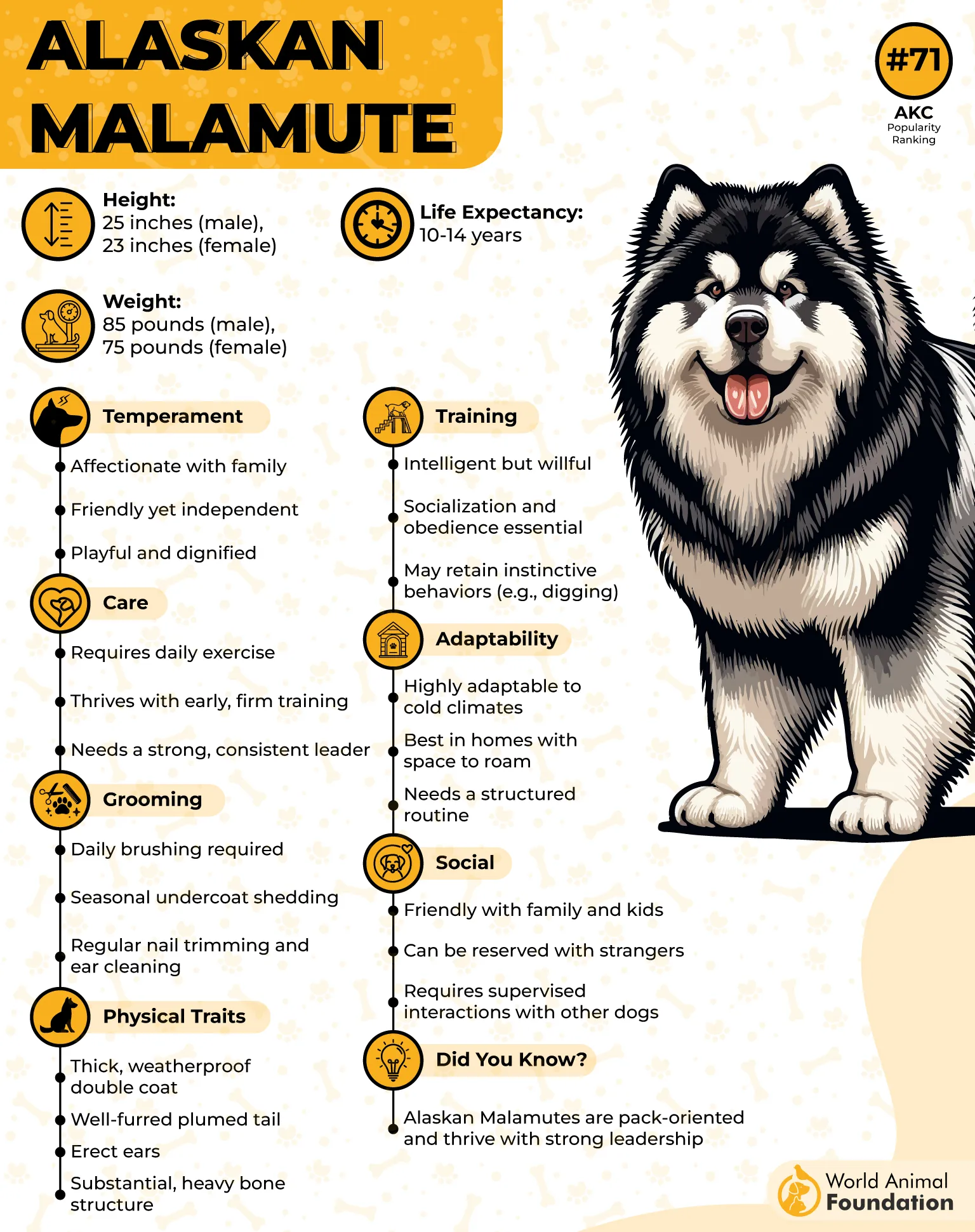
Often mistaken for large Huskies, Alaskan Malamutes are a distinct breed with Siberian roots dating back thousands of years. Famous during the Gold Rush and polar explorations, they’re now affectionate family dogs—but their size, strength, and stubbornness require patient training.
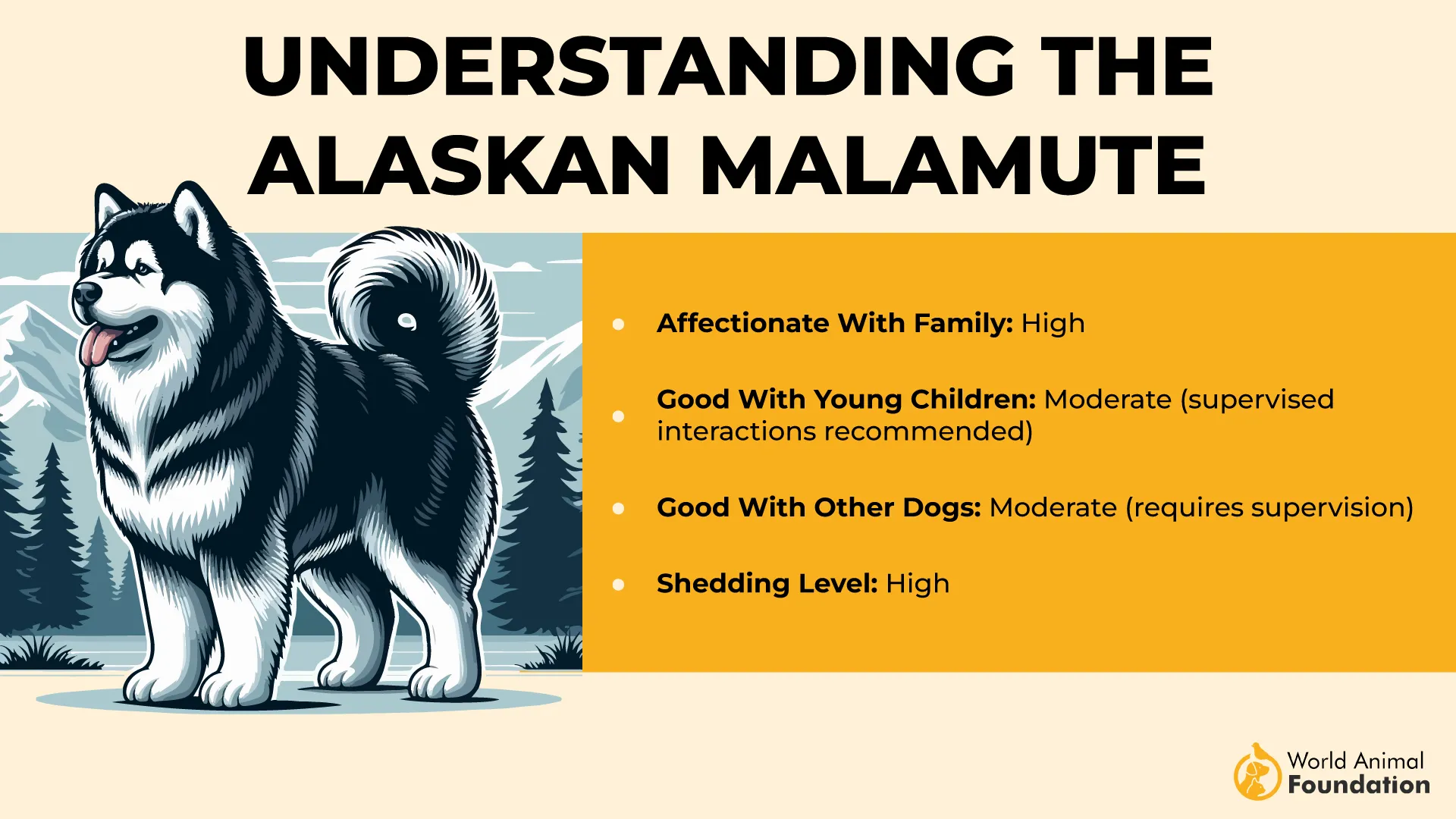
Malamutes shed heavily once a year in a dramatic “blowout,” losing enough fur to fill a pillowcase. Regular brushing helps manage this, while their coat is otherwise fairly easy to maintain.
As noted by the American Kennel Club (AKC), Malamutes are pack animals with strong personalities. They respect confident leaders but may test boundaries. Their independent streak and strength can make training challenging, but they excel at sledging and pulling.
Their playful spirit suits experienced dog owners more than families with very young children or seniors.
Fun fact:
Unlike wolves, who shy away from humans, Malamutes can be a bit reserved at first. But with early socialization from a responsible breeder, they grow into confident, loyal pals who love adventure—just don’t expect them to curl up in your lap!
4. Samoyed
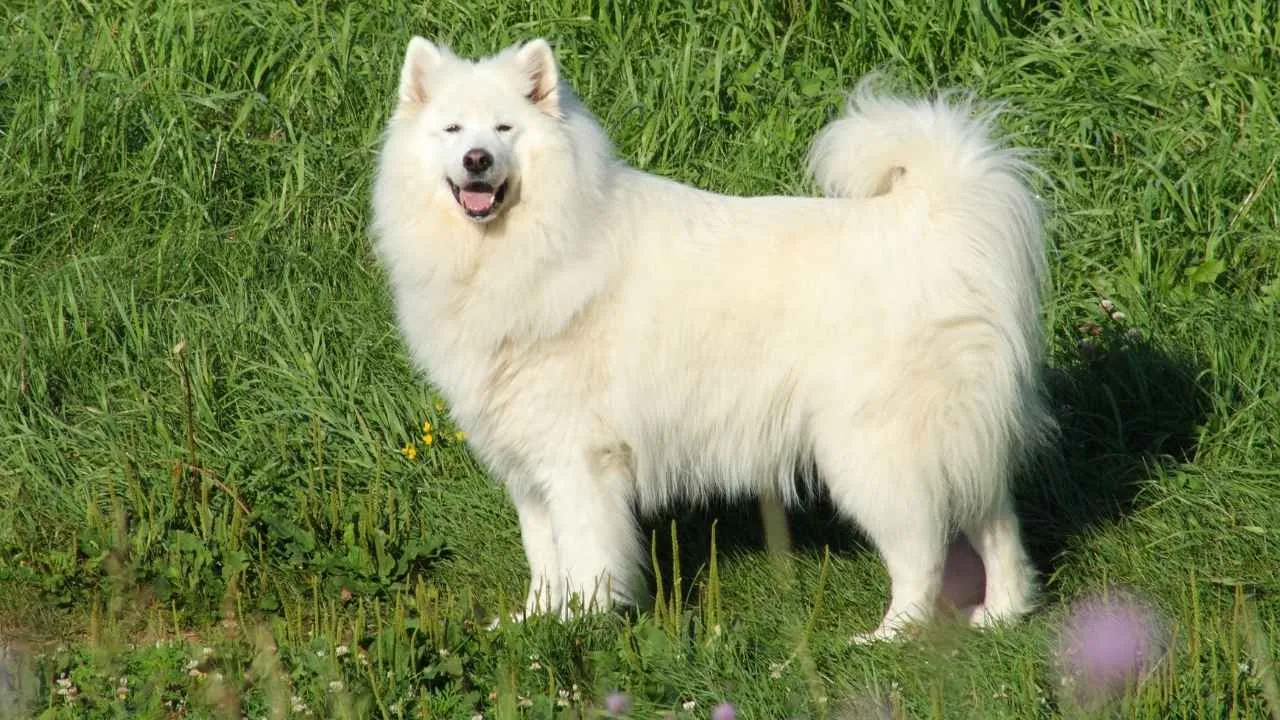
Meet the Samoyed, the fluffy snow queen of the dog world! Famous for their dazzling white coat, curled tails, and irresistible “Sammy smile,” these friendly pups are built for chilly climates. Originally bred by the Samoyed people in Siberia, these hardworking dogs were bred for endurance, often covering long distances in the Arctic Circle and thriving in harsh conditions.
Samoyeds sport a dense coat made up of a long, straight top layer and a soft, dense undercoat that keeps them cozy in freezing weather. But beware — their coat needs regular brushing (think two to three times a week, or daily during heavy spring shedding) to avoid painful mats.
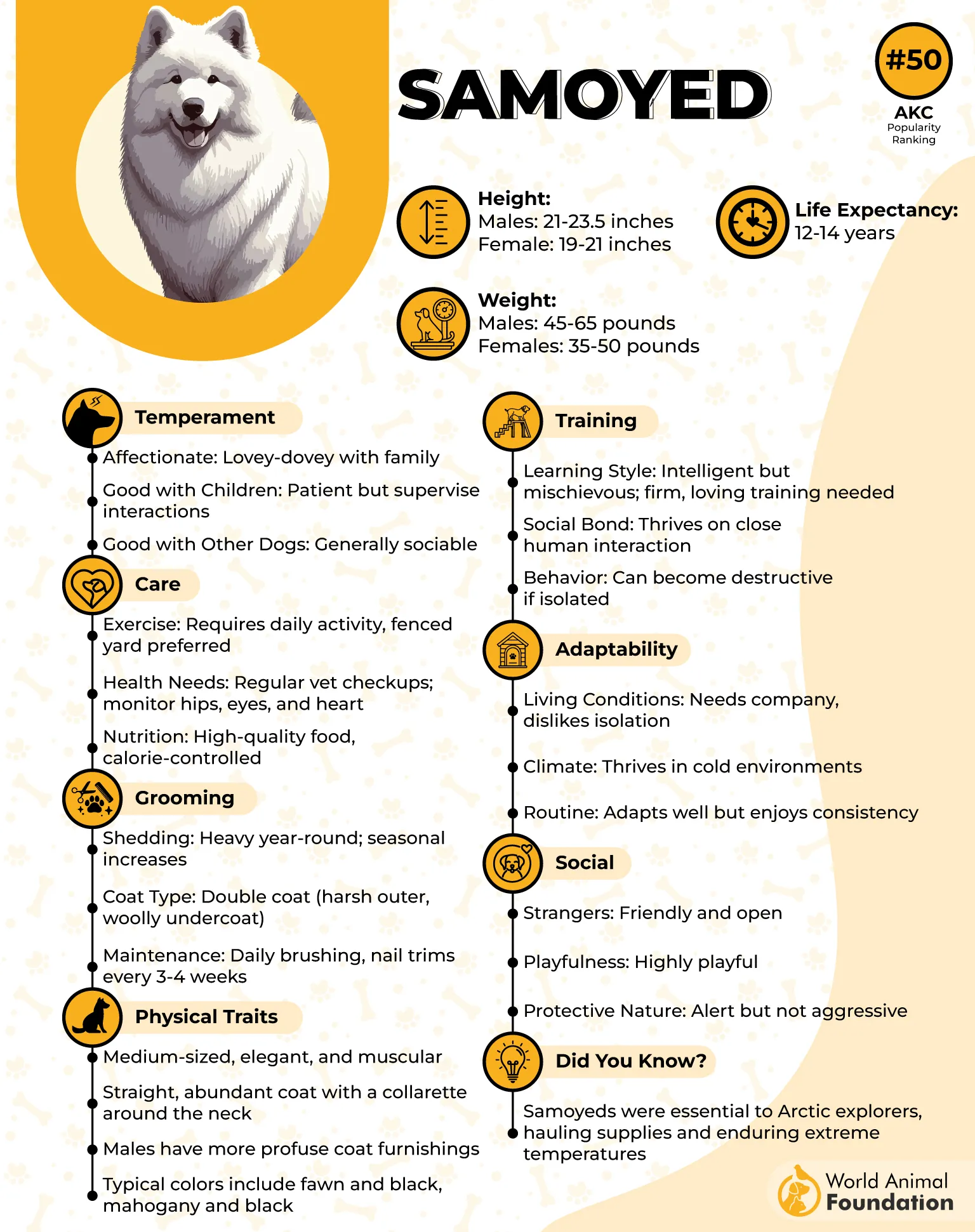
These adventurous dogs love daily exercise, whether it’s a long walk, a hike, or a good game of chase in a securely fenced yard. They also shine in dog sports like sledging, agility, and nose work. Just don’t expect a great swimmer — that’s not their thing!
Samoyeds are affectionate and friendly dogs, perfect for family life; they are always up for an outing but happy to chill at home, too. Their independent and easily distracted nature means training can be a bit of a challenge, but with positive, reward-based methods, they pick up commands quickly.
Friendly with people, dogs, and other pets, they make excellent watchdogs but aren’t the best for serious protection duties. Left alone for long periods, they might resort to behavioral problems, such as barking or digging, to entertain themselves.
Fun fact:
That famous “Sammy smile” isn’t just adorable — it helps prevent drooling in freezing Siberian weather, stopping icicles from forming around their mouths. Plus, Samoyeds are surprisingly clean, earning the nickname “Teflon dogs” because dirt just slides right off their fluffy coats!
5. Saarloos Wolfdog
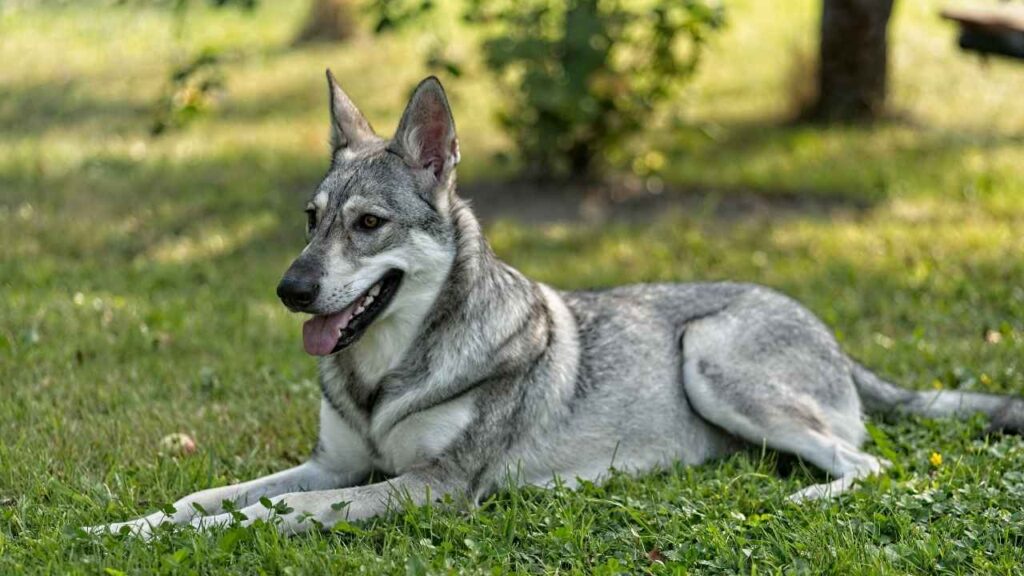
Meet the Saarloos Wolfdog — part German Shepherd, part wolf, and all majestic. Originally bred in the Netherlands by Leendert Saarloos, this striking breed was created by crossing a German Shepherd with an Eurasian grey wolf.
Saarloos bred a dog that looks wild but acts tame. Standing up to 2.5 feet tall and weighing 80–100 pounds, Saarloos dogs have to strike wedge-shaped heads, tapered muzzles, piercing eyes, and thick double coats in white, cream, brown, and grey. Their muscular build and bushy tails scream “wolf,” but their personality is much more German Shepherd than wild.
Despite their fierce looks, Saarloos Wolfdogs are affectionate and form strong bonds with their families. They enjoy attention and training, especially when praised, but can suffer from separation anxiety due to their pack instincts. These active dogs need plenty of companionship and activity.
Outdoors, they’re energetic and agile, requiring a tall fence to keep them contained. Their high prey drive means early socialization is important to prevent chasing small animals. Indoors, they’re calm and gentle but prefer quiet environments over noisy, rowdy ones.
Saarloos Wolfdogs aren’t typical guard dogs—they tend to avoid strangers rather than confront them. Naturally cautious and reserved, they thrive with proper training and socialization, fitting well into families while staying a bit aloof around guests.
Fun Fact:
Though they look wild, Saarloos Wolfdogs are only about 25% wolf. Saarloos intentionally dialed back the wolf content to keep the breed manageable and family-friendly. The result? A dog with the looks of a wolf and the heart of a loyal shepherd.
6. West Siberian Laika
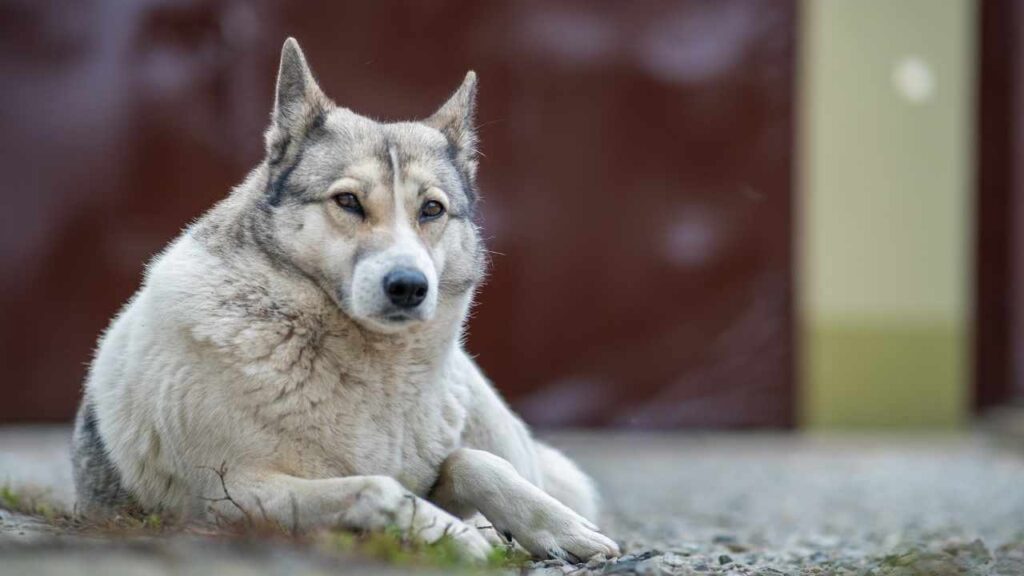
If you’re seeking a dog with ancient roots, wild instincts, and fierce loyalty, meet the West Siberian Laika (WSL). One of four Laika breeds, this rugged hunter hails from Russia’s dense forests, where it worked with the Hanty and Mansi people.
With wolf ancestry and a history tied to the sable fur trade, the breed nearly vanished before a preservation effort in the early 1900s saved it. The WSL arrived in the U.S. in 1992, bringing its storied legacy overseas.
The WSL’s sharp features and spitz build give it a striking, wolf-like appearance. Medium to large, it has a dense, weatherproof double coat. Its coarse outer coat stands off the body, while a soft undercoat provides insulation. Expressive oval eyes, pointy ears, and bearded cheeks complete its wild look, majestic and built for harsh conditions.
WSLs are not for the faint of heart—or for first-time dog owners. These dogs are intelligent but independent, driven by instinct and energy. Without enough stimulation, this dog will find its own entertainment—cue the destruction and nonstop barking.
And while they bond deeply with their people, they don’t do well with small pets (sorry, hamsters and cats) due to a strong prey drive that’s impossible to ignore.
WSLs are known to be vocal dogs—after all, they were bred to alert hunters by barking—so don’t be surprised if your pup likes to chat. With the right guidance, this intelligent dog can become a devoted companion and a fantastic working partner.
7. Canadian Inuit Dog
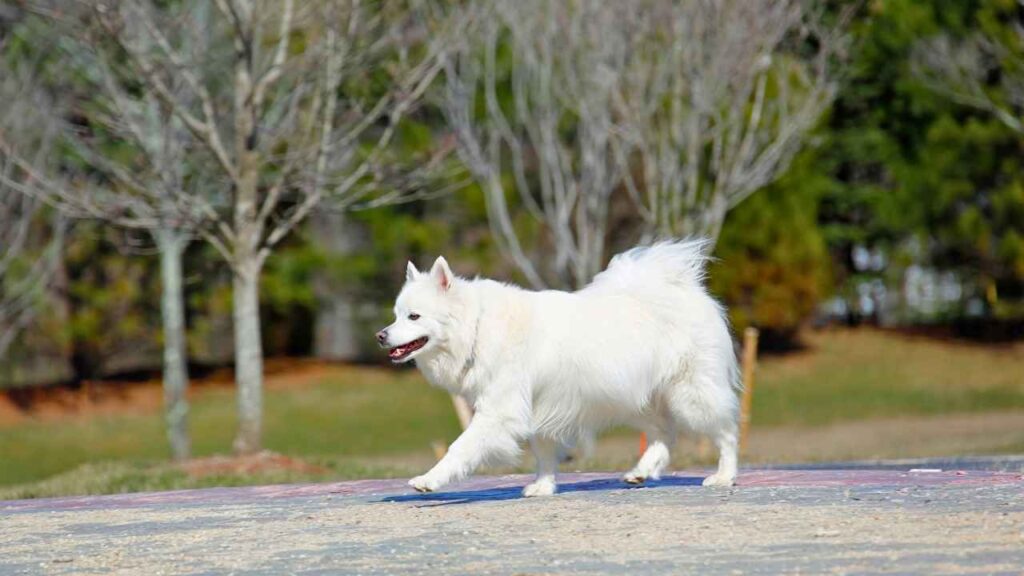
The Canadian Inuit Dog—also called the Canadian Eskimo Dog or qimmiq—is a true Arctic powerhouse. Built bigger and stronger than your average husky, this sturdy spitz-type was bred for hard work, playing a vital role as sled-pullers for the Inuit people and embodying Canada’s northern heritage.
As noted by the Canadian encyclopedia, once declared extinct after government sledge dog culls in the 1960s and ‘70s, dedicated restoration efforts saved the breed from the Canadian Eskimo Dog Research Foundation and the Canadian Kennel Club. Today, about 300 remain registered, proudly carrying on as Nunavut’s official animal.
Loyal and loving yet independent and energetic, Canadian Inuit Dogs aren’t typical lapdogs. They thrive with experienced owners who can provide ample space and mental stimulation. These dogs are built for action—think hiking and sled-pulling rather than couch lounging.
Their thick double coats protect them from freezing temperatures, but bring heavy shedding twice a year. Coat colors vary from red, black, white, gray, brown, or blends of these.
Males often have a longer mane around the neck and shoulders, enhancing their wild, lion-like appearance. Upright ears, curled tails, and solid muscle complete their striking, capable look.
Bonus Fact:
Ever heard of the Labrador Husky? It’s a close cousin of the Canadian Inuit Dog, often larger in size due to isolated populations and a bit of wolf DNA in the mix. Talk about a wild family reunion!
Conclusion
If you’re drawn to the striking look of Huskies but want to explore your options, many dogs share that wolf-like charm. From working powerhouses like the Alaskan Husky and Greenland Dog to more companion-friendly breeds like American Eskimo Dogs and Japanese Akitas, these northern breeds offer a mix of strength, loyalty, and endurance.
Some, like the Greenland Dog, were bred to pull sleds through ice and snow, while others, such as American Eskimos, fit better into family life, though they can still be high maintenance.
Whether you’re fascinated by the wild appeal of Carpathian Wolf descendants or curious about other breeds once used to hunt bears, there’s a lookalike for every lifestyle. Just remember, many of these dogs are packed with energy and instinct—they’re not always the best fit for first-time owners.
But for those who can match their intensity, the right breed can be a healthy, devoted companion with a touch of dire wolf magic.


